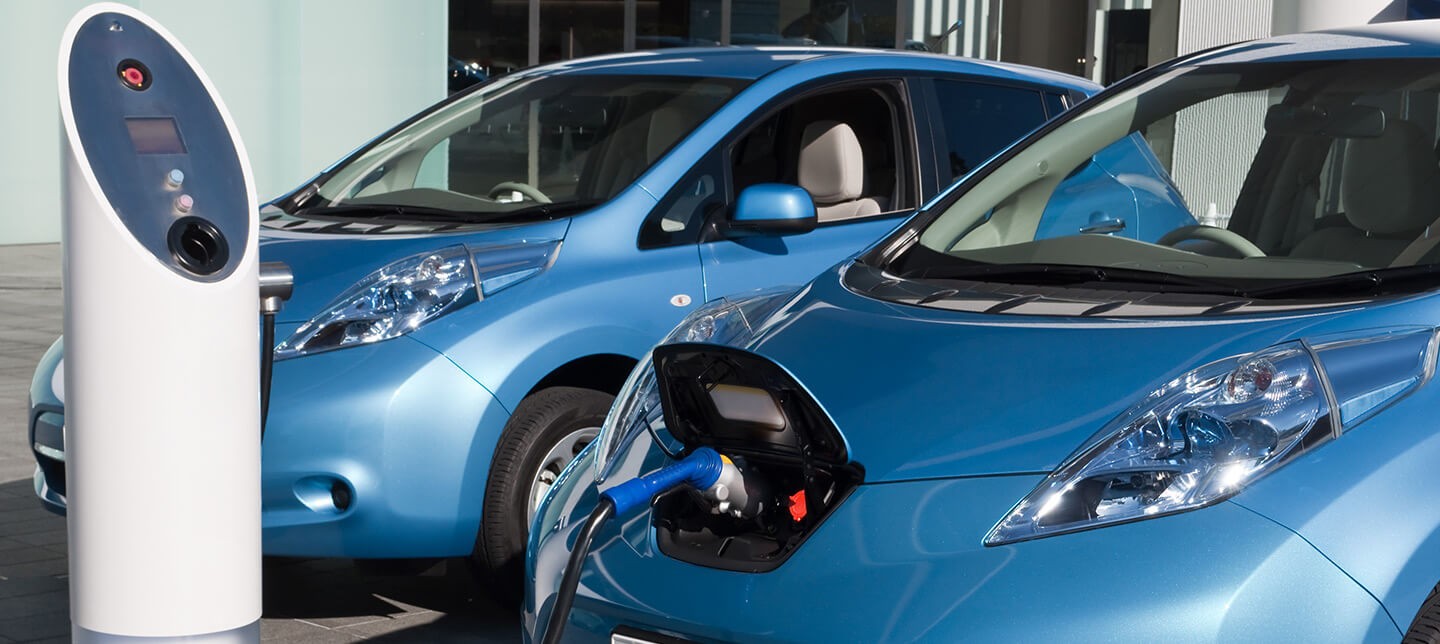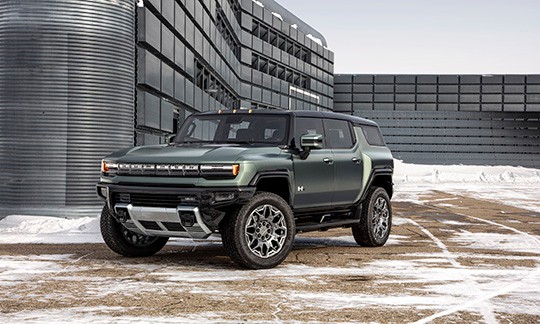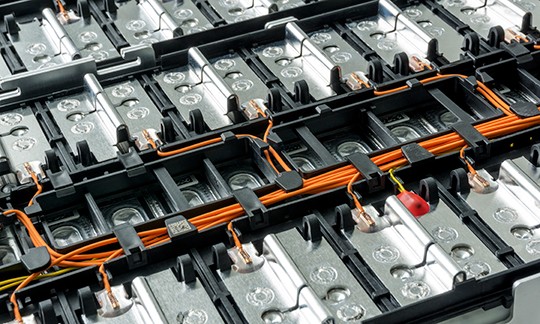
The History of Electric Cars
BUSINESS INSIGHT
TRANSPORTATION | 6 MINUTE READ
EVs debuted at the start of the automotive age, so why did it take so long for them to gain traction? Read about the surprising history of the electric car.
Today’s electric vehicles are decidedly high-tech, with many boasting touchscreen panels, head-up displays, and sleek silhouettes. People are often surprised to learn that the first EVs were invented in the 1800s and briefly shared the road with the gasoline and steam-powered cars of the 19th century. The rise, fall, and return of electric cars is an interesting story in-and-of itself, but it also has a lot to tell us about how automotive technology makes it from the drawing board to the driveway.
Who Invented the First Electric Car?
In 1887, American William Morrison invented what’s widely regarded as the first practical electric car. Morrison designed a light and powerful EV battery, wired it to a Des Moines Buggy Company carriage, and rode into the history books.
Several inventors had been working on electric cars as early as the 1830s. Scotland’s Robert Anderson was one of the first to demonstrate the technology around 1832 with a crude electric vehicle.
It's worth noting that the first commercially produced automobile, the Benz Patent Motor Car, debuted in 1886. In other words, electric cars were under development right from the beginning of the automotive age. So, why does it seem like EVs are new technology?
Competition from Gasoline and Steam
Electric cars were commercially available in the early 20th century and were popular for a time. Electric motors were quiet and clean—a 1914 ad for a Detroit Electric car noted it, “glides with a silence and grace peculiarly its own.”
However, consumers could also choose gas or steam-powered automobiles. Each approach had its benefits and disadvantages. In 1894, no less an authority than Thomas Edison is said to have vouched for gasoline-powered cars by telling Henry Ford, “Electric cars must be kept near to power stations. The storage battery is too heavy. Steam cars won't do, either, for they have to have a boiler and a fire. Your car is self-contained—carries its own power plant—no fire, no boiler, no smoke, and no steam. You have the thing. Keep at it.”
Why Did Gas Cars Win Over Electric?
There were two major developments that worked in gas-powered vehicles’ favor. First, extensive oil reserves were discovered in Texas in 1901. This discovery helped lower the price of gasoline in the United States and made gas cars more affordable to own. Second, Henry Ford’s use of the assembly line beginning in 1913 brought the price of his automobiles within reach of more people. Ford cars were powered by gasoline.
Aside from those events, the U.S. lacked the electrical infrastructure to make charging electric vehicles convenient. Only 35 percent of homes had electricity as late as 1920, and most of these homes were in cities. Finally, early EV batteries had shorter ranges and lower speeds than internal combustion engines.
These limitations dealt a seemingly fatal blow to electric vehicles, until economic factors and technological innovations began working in their favor decades later.
The Modern EV Era Begins
Oil is a nonrenewable resource, emissions take a toll on the environment, and gas prices can fluctuate widely over short periods of time. Such concerns about fossil fuels renewed interest in electric vehicles in the late 20th century.
The GM EV1
The first modern mass-produced electric car was the General Motors EV1, which debuted for lease in 1996. Early models had a range of only 74 miles between charges, though switching from lead-acid to nickel-metal hydride batteries extended this to 150 miles. While the EV1 had devoted followers, GM recalled all the leased vehicles in 2003 because of concerns about the long-term viability of electric cars.
Tesla Takes the Wheel
Tesla, Inc. was founded by Martin Eberhard and Marc Tarpenning in the same year GM recalled the EV1. Tesla released its first car, the Roadster, in 2008. Elon Musk became the CEO that same year. As of late 2023, Tesla has five electric vehicles in its fleet, with the Cybertruck poised to become number six. Tesla’s focus on electric cars helped it become the most valuable automotive company in the world and synonymous with EVs. This success, paired with technical achievements, attracted the attention of traditional car companies, many of which have added electric vehicles to their lineups.
More Automakers Join the Race
As of late 2023, drivers have a variety of makes and models to choose from when it comes to EVs. GM, which launched the modern EV age with the EV1, has the Chevy Bolt. Ford Motors’ Mustang Mach-E is an electric crossover SUV and cousin to the iconic sports car. The Kia EV6, Volkswagen ID.4, and Hyundai Ioniq 5 are other popular EVs on the road today.
Better Batteries Give EVs a Jolt
While greater awareness of environmental concerns and high energy costs increased interest in electric vehicles, new battery technology made them more practical in comparison to gas-powered competitors. While early EVs relied on lead-acid or nickel-metal hydride batteries, most EVs now use lithium-ion (Li-ion) batteries, which are rechargeable, have a greater capacity, and last longer than their predecessors. Li-ion batteries are also found in cell phones, laptops, and other consumer electronics.
Better rechargeable batteries help reduce “range anxiety,” the fear of running out of power with nowhere to plug in. The Tesla Model 3 can go 333 miles on a single charge, more than twice the range of a late-model EV1.
Despite gaining mainstream attention, electric cars and trucks make up less than 1 percent of the vehicles on the road in the United States. The next generation of EV battery technology aims to tackle stubborn challenges to lower costs and extend battery life, both of which may help accelerate the adoption of electric vehicles.
NI’s EV Battery Test and Measurement Solutions
Electric vehicle technology is changing rapidly, requiring OEMs and Tier 1 suppliers to adapt their tools and test methodologies to new requirements. NI supports EV test across a range of applications, streamlining processes and gathering the data needed to meet tight deadlines.
Our Electric Drive Test solutions evaluate powertrain performance, including inverters and motors. NI’s capabilities include simulation to identify potential issues with hardware and software. The use of digital twins, computer models of real components, helps flag problems before subjecting real equipment to potential damage.
The history of electric cars demonstrates the importance of battery technology to the commercial viability of EVs. NI’s software-defined battery test lab is open and modular to allow for flexibility as test engineers move from one use-case to another. Battery cyclers and simulation tools integrate easily with third-party systems to reduce stress and save time when building a new test architecture for battery packs and battery management systems (BMSs).
Electric vehicles took the long road to mass production, but a variety of factors have brought them to the forefront of automotive development. Through the combined efforts of designers, manufacturers, and engineers, new technologies will power cars and trucks into a greener, more energy-efficient future.



